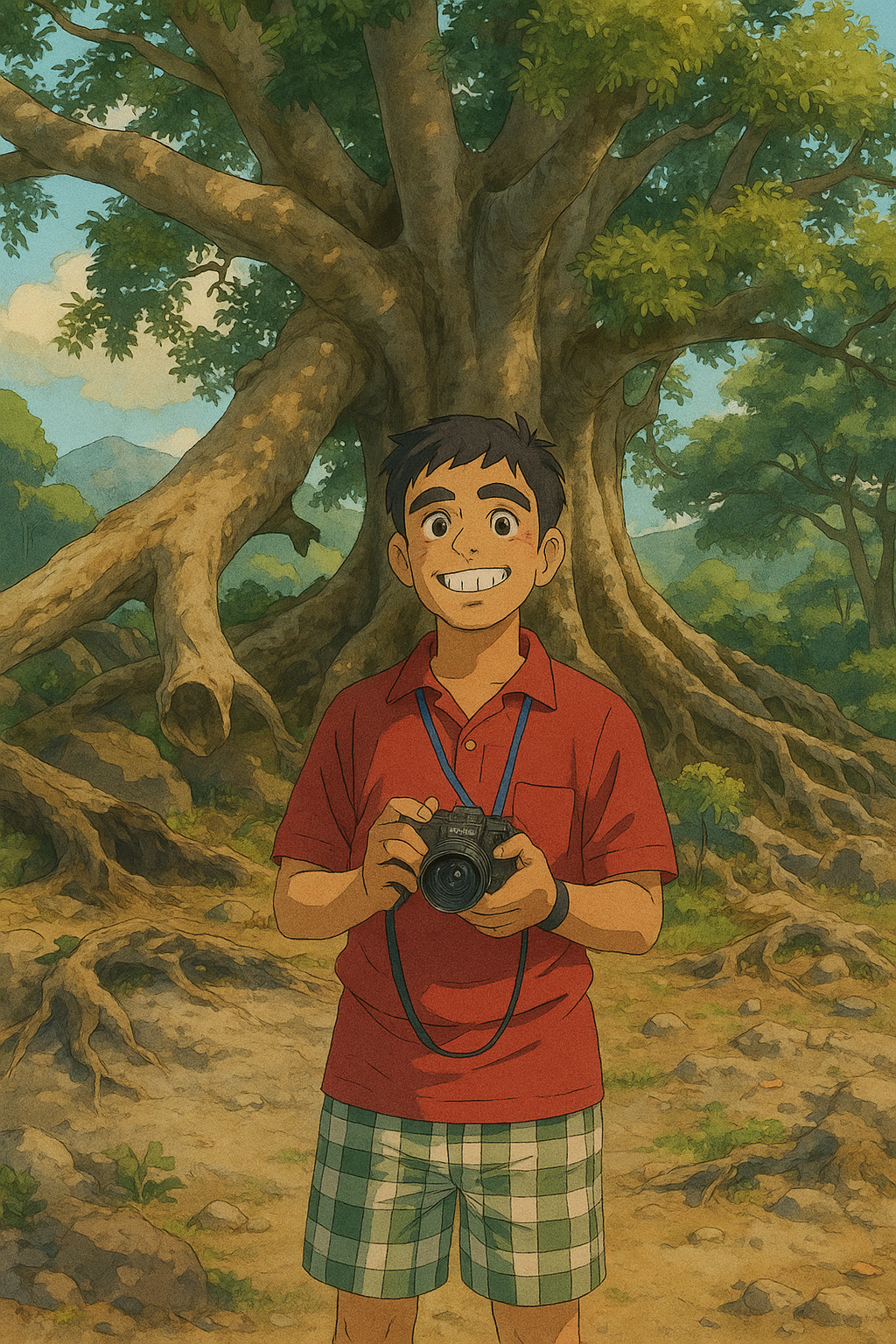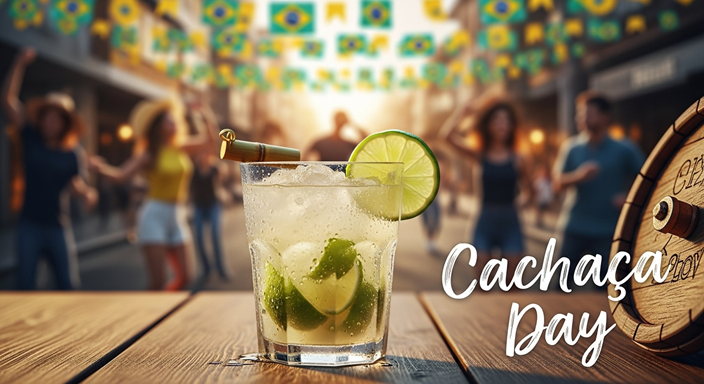Every culture treasures a signature drink that reflects its heritage, history, and traditions. For Brazil, that drink is Cachaca – a distilled spirit made from fermented sugarcane juice. Loved by millions, it’s the soul of Brazil’s most famous cocktail, the Caipirinha, and an iconic representation of Brazilian lifestyle. Each year, Cachaca Day is celebrated with enthusiasm, honoring the cultural, economic, and social importance of this unique spirit. It’s more than just a drink; it’s a symbol of Brazil’s resilience, creativity, and joyous way of life. Cachaca Day connects people across borders through taste, tradition, and festive celebrations.
History of Cachaca Day
The roots of Cachaça trace back to the early 16th century, when Portuguese colonizers brought sugarcane to Brazil. By the 1530s, enslaved Africans working in sugar mills discovered that the foam collected from fermenting sugarcane juice could be distilled into a spirit. This marked the birth of Cachaça, often considered the first distilled spirit of the Americas.
As for Cachaça Day, the date September 13th was officially chosen to commemorate the recognition of Cachaça as a distinctly Brazilian product. In 2009, the Brazilian government declared this day to honor the spirit’s deep cultural significance. Since then, Brazilians and spirit lovers worldwide have celebrated the day, elevating Cachaça beyond a beverage to a heritage symbol.
Importance of Cachaca Day
Cachaça Day holds immense importance, both culturally and economically:
-
Cultural Identity: Cachaça is not just a drink; it’s Brazil’s national spirit, closely tied to festivals, gatherings, and traditions.
-
Economic Contribution: Brazil produces over a billion liters of Cachaça annually, supporting thousands of jobs and contributing significantly to exports.
-
Heritage Recognition: The day reminds Brazilians and the world of the spirit’s historical journey from colonial times to modern-day global recognition.
-
Global Awareness: Celebrating Cachaça Day educates the international community about its uniqueness, distinguishing it from rum and positioning it as a premium craft spirit.
Significance of Cachaca Day
The significance lies in acknowledging Cachaça as more than alcohol. It’s a bridge between Brazil’s past and future. Once considered a drink of the working class and enslaved, today Cachaça is enjoyed in luxury bars worldwide. The day symbolizes:
-
Heritage Preservation: Protecting traditional distillation practices.
-
Culinary Evolution: Encouraging bartenders and chefs to experiment with new recipes using Cachaça.
-
National Pride: Unifying Brazilians around a symbol that belongs solely to them.
-
Global Reach: Encouraging tourism and cultural exchanges focused on Brazilian traditions.
Why Cachaca Day Is Celebrated
Cachaça Day is celebrated for three main reasons:
-
To honor history: Recognizing the centuries-old journey of the spirit.
-
To celebrate culture: Appreciating how it connects people during carnivals, family gatherings, and nightlife.
-
To promote the drink: Expanding its market beyond Brazil by spotlighting its uniqueness compared to rum or vodka.
It’s a toast to identity, resilience, and joy – elements at the heart of Brazil.
How Cachaca Day Is Celebrated
Celebrations of Cachaça Day are vibrant, festive, and full of flavor. Common ways include:
-
Bars and Restaurants: Hosting Cachaça tasting sessions and offering discounted Caipirinhas.
-
Cultural Events: Music, dance, and storytelling events highlighting the spirit’s heritage.
-
Workshops: Mixology classes teaching how to craft cocktails using Cachaça.
-
Festivals: Organized parades and open-air parties with food stalls serving Brazilian delicacies paired with Cachaça.
-
Home Gatherings: Families prepare their own Caipirinhas or other creative Cachaça-based cocktails to toast together.
Countries and Regions Celebrating
While Brazil is the epicenter of Cachaça Day, celebrations are spreading globally:
-
United States: With Cachaça exports growing, many American bars host cocktail nights.
-
Europe: Countries like Germany, Portugal, and France have vibrant events, thanks to Brazil’s diaspora communities.
-
Asia: Japan, which has a significant Brazilian immigrant community, celebrates with authentic food and drinks.
-
Latin America: Neighboring countries embrace the day as part of regional cultural exchange.
Citizens’ Involvement
Ordinary citizens play a huge role in making Cachaça Day successful:
-
Social Media Sharing: Posting pictures of cocktails and using hashtags like #CachacaDay.
-
Community Events: Organizing local tastings and inviting neighbors.
-
Supporting Local Producers: Choosing artisanal Cachaça brands to promote small businesses.
-
Education: Attending workshops to learn about its history and production.
-
Tourism Participation: Traveling to Brazil’s sugarcane regions and distilleries to experience the authentic heritage.
These collective efforts ensure the celebration resonates beyond mere drinking.
Theme for Cachaca Day 2025
The theme for Cachaca Day 2025 is:
“Cachaça – A Spirit of Unity and Heritage.”
This theme emphasizes the role of Cachaça in uniting communities, celebrating Brazilian traditions, and promoting cultural pride on a global stage. It also encourages sustainable production practices that respect the environment and future generations.
10 Famous Quotes for Cachaca Day
-
“Cachaça is not just a drink; it’s Brazil in a glass.”
-
“Every sip of Cachaça carries centuries of history.”
-
“To taste Cachaça is to taste the soul of Brazil.”
-
“Caipirinha is the dance of lime and sugar, but Cachaça is the rhythm.”
-
“Cachaça reminds us that heritage can be bottled and shared.”
-
“It began as the people’s spirit, and today it belongs to the world.”
-
“Raise a glass of Cachaça – raise a toast to unity.”
-
“In every drop lies the sweat of sugarcane fields and the joy of festivals.”
-
“From colonial mills to modern bars, Cachaça is timeless.”
-
“Celebrate Cachaça, celebrate Brazil, celebrate life.”
FAQs
Q1. What is Cachaca?
Cachaca is a Brazilian distilled spirit made from fermented sugarcane juice, often compared to rum but unique in flavor.
Q2. When is Cachaca Day celebrated?
It is celebrated every year on September 13th.
Q3. Why was September 13th chosen?
This date marks the official recognition of Cachaca as a distinct Brazilian product in 2009.
Q4. How is Cachaca different from rum?
Rum is typically made from molasses (a byproduct of sugar production), while Cachaca is made from fresh sugarcane juice.
Q5. What is the most famous cocktail made with Cachaca ?
The Caipirinha, Brazil’s national cocktail, made with lime, sugar, and Cachaca.
Q6. Who celebrates Cachaca Day?
Primarily Brazilians, but also spirit enthusiasts worldwide.
Q7. Is Cachaca considered a luxury spirit?
Yes, many artisanal and aged varieties are marketed as premium spirits internationally.
Q8. How do people celebrate at home?
By preparing Cachaca cocktails, inviting friends, and learning about its heritage.
Q9. Can non-Brazilians celebrate Cachaca Day?
Absolutely! It’s a global celebration of Brazilian culture.
Q10. What is the theme for Cachaca Day 2025?
“Cachaca – A Spirit of Unity and Heritage.”
Conclusion
Cachaca Day is more than just an occasion to raise a glass; it’s an invitation to immerse oneself in the rich cultural fabric of Brazil. From its humble beginnings in colonial times to its recognition as a global symbol of Brazilian heritage, Cachaça has traveled a remarkable journey. Celebrating Cachaça Day means honoring the resilience of those who created it, the traditions that shaped it, and the joy it brings to gatherings around the world. As we embrace the 2025 theme of unity and heritage, let’s toast not only to Cachaca but also to the enduring spirit of Brazil itself.
|
!!! Stay Updated !!! 👉 Follow and Join us on 👈 📰 Trending News | 📢 Important Alerts | 💼 Latest Jobs LinkedIn | Threads | Facebook |Instagram | Tumblr 📱 Follow us daily & never miss an update 📱 |

Someshwar Chowdhury is a seasoned Chartered Mechanical Engineer, Educator, and Technology enthusiast with over a decade of experience in engineering education and consultancy. Someshwar is also an active blogger, trainer, and member of professional bodies like ISHRAE and GREEN ADD+. When not teaching or consulting, he enjoys blogging, music, and exploring green technologies.
Discover more from Today's Significance
Subscribe to get the latest posts sent to your email.
